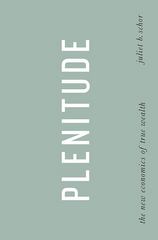Question
Suppose that a financial economist wants to analyse the effect of personal credit history on the likelihood of success of a credit card application. Credit
Suppose that a financial economist wants to analyse the effect of personal credit history on the likelihood of success of a credit card application. Credit history (CH) of an individual can be measured by the indicator that takes on four values {1, 2, 3, 4}, where 1=outstanding, 2=good, 3=intermediate, and 4=poor. Based on this indicator, the financial economist defined a dummy variable for each value of CH as follows: CH1=1 if CH is 'outstanding', and = 0 otherwise; CH2=1 if CH is 'good', and = 0 otherwise; CH3=1 if CH is 'intermediate', and = 0 otherwise; CH4=1 if CH is 'poor', and = 0 otherwise. She then specifies the following model to estimate the effect on the likelihood of success of a credit card application:
CreditCardi = 0 + 1CH1i + 2CH2i + 3CH3i + 4CH4i + Ui (1)
Where CreditCardi is the dummy variable = 1 if the credit card application of individual i was successful, = 0 otherwise.
a) In model (1), does it make sense to hold CH1, CH2 and CH3 fixed, while changing CH4?
b) Explain why model (1) violates the no-perfect-collinearity assumption (i.e., Assumption 3 of the Classical Linear Regression Model (CLRM) assumptions).
c) How do you reformulate model (1) so that its parameters have useful interpretations and it satisfies the no-perfect-collinearity assumption?
Step by Step Solution
There are 3 Steps involved in it
Step: 1

Get Instant Access to Expert-Tailored Solutions
See step-by-step solutions with expert insights and AI powered tools for academic success
Step: 2

Step: 3

Ace Your Homework with AI
Get the answers you need in no time with our AI-driven, step-by-step assistance
Get Started


